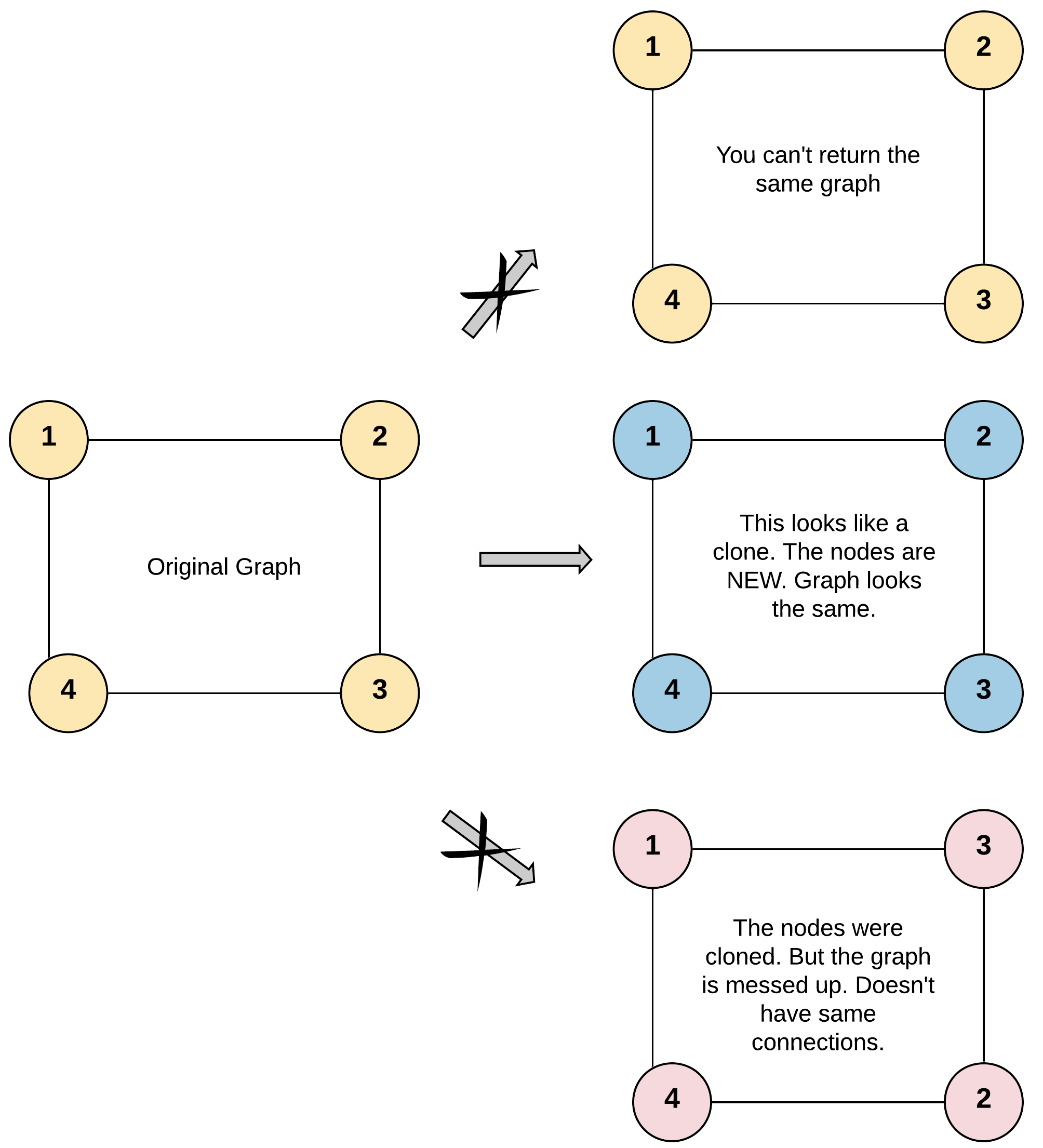LeetCode-in-Java
133. Clone Graph
Medium
Given a reference of a node in a connected undirected graph.
Return a deep copy (clone) of the graph.
Each node in the graph contains a value (int) and a list (List[Node]) of its neighbors.
class Node { public int val; public List
Test case format:
For simplicity, each node’s value is the same as the node’s index (1-indexed). For example, the first node with val == 1, the second node with val == 2, and so on. The graph is represented in the test case using an adjacency list.
An adjacency list is a collection of unordered lists used to represent a finite graph. Each list describes the set of neighbors of a node in the graph.
The given node will always be the first node with val = 1. You must return the copy of the given node as a reference to the cloned graph.
Example 1:

Input: adjList = [[2,4],[1,3],[2,4],[1,3]]
Output: [[2,4],[1,3],[2,4],[1,3]]
Explanation:
There are 4 nodes in the graph.
1st node (val = 1)'s neighbors are 2nd node (val = 2) and 4th node (val = 4).
2nd node (val = 2)'s neighbors are 1st node (val = 1) and 3rd node (val = 3).
3rd node (val = 3)'s neighbors are 2nd node (val = 2) and 4th node (val = 4).
4th node (val = 4)'s neighbors are 1st node (val = 1) and 3rd node (val = 3).
Example 2:

Input: adjList = [[]]
Output: [[]]
Explanation: Note that the input contains one empty list. The graph consists of only one node with val = 1 and it does not have any neighbors.
Example 3:
Input: adjList = []
Output: []
Explanation: This an empty graph, it does not have any nodes.
Constraints:
- The number of nodes in the graph is in the range
[0, 100]. 1 <= Node.val <= 100Node.valis unique for each node.- There are no repeated edges and no self-loops in the graph.
- The Graph is connected and all nodes can be visited starting from the given node.
Solution
import com_github_leetcode.Node;
import java.util.ArrayList;
import java.util.HashMap;
import java.util.Map;
public class Solution {
public Node cloneGraph(Node node) {
return cloneGraph(node, new HashMap<>());
}
private Node cloneGraph(Node node, Map<Node, Node> processedNodes) {
if (node == null) {
return null;
} else if (processedNodes.get(node) != null) {
return processedNodes.get(node);
}
Node newNode = new Node();
processedNodes.put(node, newNode);
newNode.val = node.val;
newNode.neighbors = new ArrayList<>();
for (Node neighbor : node.neighbors) {
Node clonedNeighbor = cloneGraph(neighbor, processedNodes);
if (clonedNeighbor != null) {
newNode.neighbors.add(clonedNeighbor);
}
}
return newNode;
}
}

